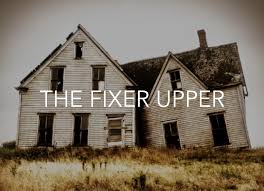Borrowing with the CMHC improvment mortgage
Posted by Steve Harmer on Saturday, January 23rd, 2016 at 11:31am.
 If you fall in love with a fixer-upper, you may find yourself in a tough spot figuring out how to pay the mortgage and cover the cost of renovations or postponing renos until you can afford them.
If you fall in love with a fixer-upper, you may find yourself in a tough spot figuring out how to pay the mortgage and cover the cost of renovations or postponing renos until you can afford them.
Main Benefits of a Purchase-Plus Improvements Mortgage:
The little-known CMHC improvement mortgage (previously known as the purchase plus improvements program (PPIP)) allows home buyers in that scenario to borrow money to buy and immediately renovate a home with funds from their mortgage lender rather than taking out a separate line of credit that usually carries a higher interest rate and adds another layer of complication to their financial life.
PPIP is generally available with as little as five per cent down. However, buying with less than 20 per cent down is what’s known as a high-ratio mortgage, so mortgage insurance premiums would apply.
Here’s what you need to know about PPIP:
- You won't have to qualify for a further renovation loan after closing (which is often hard to do)
- You pay the lowest possible interest rate and payments for the renovations (which have been included in the mortgage with same rate and amortization)
 The buyer must pay for renovations upfront
The buyer must pay for renovations upfront
Funds are advanced to the lawyer at funding so that, once renovations are complete, the buyer gets the money. If the lender’s timeline isn’t met, the lawyer would have to send the funds back as a lump sum towards the mortgage.
If buyers need more time, they can usually get an extension by communicating with the lender. If the lender is super strict, the money will be returned to the lender (minus the interest the borrowers paid) and debited towards the mortgage, and the borrower would need to finance the renovations in some other way;
You’ll need quotes from a contractor
 When you submit your application to the lender, you’ll typically need to provide a quote from a contractor. Generally, lenders will generally allow you to use up to 10 per cent (some with a maximum of $40,000) of the after improved value for renovations. You may also be required to submit receipts and pass an inspection when renovations are complete;
When you submit your application to the lender, you’ll typically need to provide a quote from a contractor. Generally, lenders will generally allow you to use up to 10 per cent (some with a maximum of $40,000) of the after improved value for renovations. You may also be required to submit receipts and pass an inspection when renovations are complete;
PPIP covers non-structural changes
PPIP doesn’t cover structural changes, but it covers things like adding a patio or deck, updating the kitchen, installing new flooring or finishing the basement. Renovations can’t be strictly cosmetic (for instance, if you just don’t like the kitchen cabinets and want to replace them). They must be deemed to improve the property’s value;
Anything that can be removed is excluded
Chattels (personal property) such as refrigerators or washer/dryers that can be removed from the property aren’t covered by a mortgage lender as part of PPIP. If you need these appliances, you’ll have to pay for them through other sources such as savings, credit cards or store financing. You could also consider buying lightly used appliances or floor models to save money on these purchases.
PPIP isn’t for everyone and it’s important to make sure the monthly payments are still affordable if rates increase at renewal time. If you’re in a competitive market, this could help you get into a home and make it your own. Explore your options with a mortgage broker and discuss whether PPIP makes sense for your financial situation and long-term goals.
© http://renx.ca/borrowing-purchase-plus-improvements-program/

